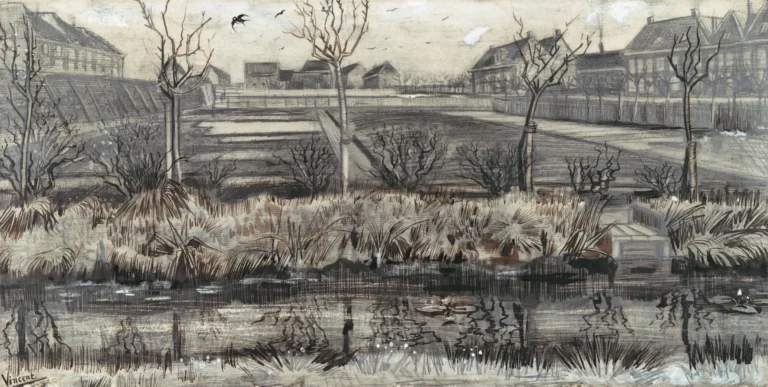Nursery On Schenkweg (1882)
Vincent van Gogh's drawing Nursery on Schenkweg from March 1882 is a captivating representation of Pierre van de Putte's flower nursery located on Schenkweg, The Hague. Executed in pen and ink, the piece measures 240mm in height and 334mm in width. Capturing the mundane with elegance, the artwork signals van Gogh's early fascination with urban landscapes and daily life. While it lacks the vivid colors typical of his later work, the meticulous line work foretells his distinctive style that would blossom in his later masterpieces.
March 1882
About the Artwork
Created during March 1882, Nursery on Schenkweg reflects a significant period in Vincent van Gogh's artistic journey. Commissioned as part of a series of cityscapes in The Hague, this drawing captures a tranquil yet industrious scene from the flower nursery owned by Pierre van de Putte. It provides a glimpse into the early stages of Van Gogh's obsession with urban life. The drawing, executed with precision in pen and ink, foreshadows the expressive style that would mark his later works, marking it as a pivotal piece in the context of his evolving artistry. This period was vital for Van Gogh as he explored different themes and techniques, which would eventually lead to his iconic representation of emotional landscapes.
Did You Know
This drawing exemplifies Van Gogh’s early interest in urban environments, which he would continue to explore throughout his career, illustrating the tension between rural tranquility and urban bustle.
While Nursery on Schenkweg shows Van Gogh’s meticulous line work, it marks the beginning of a transition towards his passionate use of color and brushstroke, which would later define his famous style.
This artwork was commissioned during a prolific period for Van Gogh, where he was encouraged to portray the everyday life and landscapes of The Hague, setting the stage for his future innovative works.










